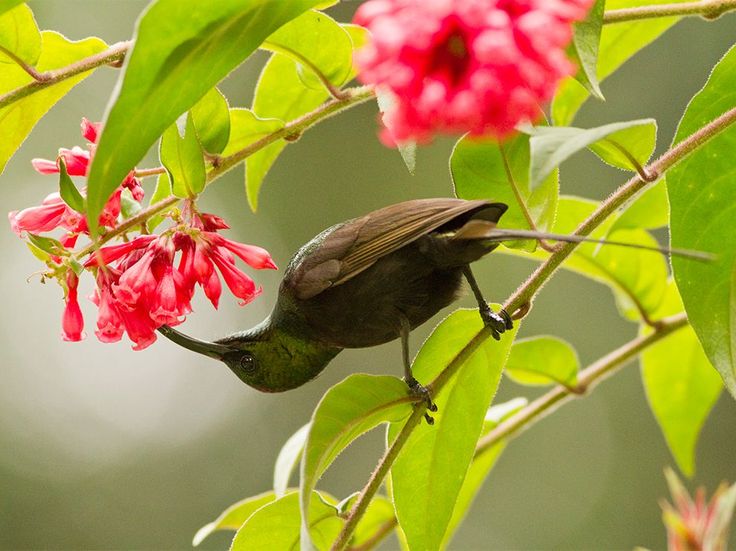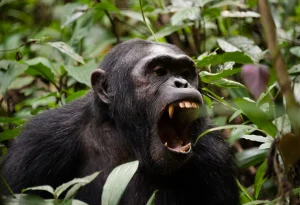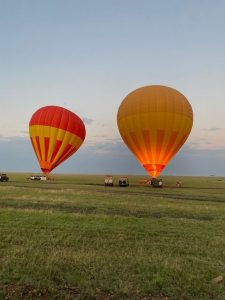Rwanda, known as the “Land of a Thousand Hills,” is not only famous for its breathtaking scenery and mountain gorillas but also for its exceptional birdwatching opportunities. With over 700 recorded bird species, including Albertine Rift endemics, rare migratory species, and globally threatened birds, Rwanda stands as one of Africa’s premier birding destinations. The country’s compact size, excellent road network, and diverse habitats—from montane rainforests to savannas and wetlands—make it possible to visit multiple birding hotspots in a single trip. Birdwatching Hotspots in Rwanda.
Which park in Rwanda has the most bird species?
Akagera National Park holds the title for the most bird species in Rwanda, with over 480–525 species recorded. Situated in the country’s east along the Tanzanian border, Akagera’s diverse ecosystems include savanna grasslands, acacia woodlands, papyrus swamps, and extensive lakes. This variety supports a remarkable range of birdlife, from large raptors like the Bateleur and Martial Eagle to waterbirds such as the African Fish Eagle, Goliath Heron, and African Open-billed Stork.
The park is also one of the few locations in Rwanda where you can spot the Shoebill Stork, typically found in the papyrus swamps along the Akagera River and Lake Birengero. The Red-faced Barbet, a species with a restricted range, is another highlight here. Birders can explore the park through game drives, guided walks, and boat safaris on Lake Ihema, which is particularly productive for waterbird sightings.
Where can you see Albertine Rift endemic birds in Rwanda?
The Albertine Rift, part of the western branch of the East African Rift Valley, is one of the most biodiverse regions in Africa. Rwanda’s Nyungwe National Park and Volcanoes National Park are prime locations for Albertine Rift endemic species—birds found nowhere else on Earth.
In Nyungwe National Park, birders can find the Red-collared Babbler, Handsome Francolin, Ruwenzori Turaco, Grauer’s Warbler, Neumann’s Warbler, and multiple sunbird species like the Purple-breasted Sunbird. This park alone hosts more than 300 bird species and offers canopy walkways and well-maintained forest trails for immersive birding.
Volcanoes National Park, while more famous for gorilla trekking, is home to 17 Albertine Rift endemics, including the Rwenzori Batis, Archer’s Ground Robin, and Dusky Crimsonwing. Birding in these high-altitude forests provides a chance to combine sightings of rare birds with dramatic volcanic landscapes.
When is the best time to go birdwatching in Rwanda?
Rwanda offers good birdwatching opportunities year-round due to its mild equatorial climate, but the best time depends on your target species. For general birding and to see resident species in their breeding plumage, the long dry season from June to September offers excellent conditions—clear skies, easier access to forest trails, and reduced rainfall.
If you want to spot migratory species from Europe and northern Africa, the wet seasons—March to May and October to November—are ideal. During these months, wetlands and lakes attract large flocks of Palearctic migrants alongside resident waterbirds. The highland areas like Nyungwe can be misty and damp in the rainy season, but they remain productive for endemic forest species.
Which wetlands in Rwanda are Important Bird Areas or Ramsar sites?
Rwanda’s wetlands play a critical role in bird conservation, offering safe breeding grounds and feeding areas for many rare and endangered species.
- Rugezi Marsh – Rwanda’s only Ramsar-listed wetland, this high-altitude peat bog in the Northern Province is a key site for the Grauer’s Swamp Warbler, Papyrus Canary, and Grey Crowned Crane.
- Akanyaru Wetlands – Straddling the border with Burundi, these wetlands host species such as the Papyrus Gonolek, White-winged Swamp Warbler, and Lesser Jacana.
- Nyabarongo Wetlands – Near Kigali, these wetlands are rich in waterbirds and serve as an Important Bird Area (IBA).
Visiting these wetlands often involves guided canoe trips or walking trails, allowing close views of papyrus specialists and wetland waders.
Where can you spot the Shoebill in Rwanda?
The Shoebill Stork, one of Africa’s most iconic and sought-after birds, can be seen in Akagera National Park, particularly in the papyrus swamps along the Akagera River system and lakes like Lake Birengero. The best chance of spotting this prehistoric-looking bird is during the dry season, when water levels drop, and fish—its primary prey—are more concentrated. Birding guides in Akagera know the key areas to search for this elusive species.
What birding opportunities are available near Kigali?
Kigali offers several convenient birding spots for those with limited time. Lake Nyarutarama, also known as Lover’s Lake, sits adjacent to the Kigali Golf Club and hosts species like the African Swamphen, Malachite Kingfisher, and Bronze Sunbird.
Nyandungu Urban Wetland Eco-Tourism Park is another easily accessible location, hosting around 70 bird species in a restored wetland environment. Umusambi Village, a sanctuary for rescued Grey Crowned Cranes, allows close-up views of Rwanda’s national bird while supporting conservation education. These urban birding sites are perfect for short visits or as warm-ups before heading to larger parks. Birdwatching Hotspots in Rwanda.
Which locations combine birdwatching with gorilla trekking?
Volcanoes National Park is the best location to combine gorilla trekking with birdwatching. While the park is primarily visited for its mountain gorillas, birders can take advantage of its forest trails to see rare species like the Ruwenzori Double-collared Sunbird and Grauer’s Swamp Warbler.
Additionally, Bwindi Impenetrable National Park in neighboring Uganda—often part of cross-border itineraries—offers a similar experience, with the chance to track gorillas and see numerous Albertine Rift endemics. Tour operators often arrange combined trips for travelers with both wildlife and birding interests. Birdwatching Hotspots in Rwanda.
What rare or endemic bird species can be found in Nyungwe?
Nyungwe National Park is a paradise for rare and endemic species. Beyond the Albertine Rift endemics, highlights include the Rockefeller’s Sunbird, Yellow-eyed Black Flycatcher, and the near-mythical Shelley’s Crimsonwing. The park’s mix of montane forest, bamboo zones, and swampy clearings provides microhabitats for a variety of bird families. The canopy walkway offers unique opportunities to spot canopy dwellers like the Bar-tailed Trogon and Great Blue Turaco.
Which birding sites offer boat or canoe trips?
Boat or canoe trips are available in several Rwandan birding destinations:
- Lake Ihema in Akagera National Park – Excellent for waterbirds like the African Jacana, White-backed Night Heron, and African Skimmer.
- Rugezi Marsh – Canoe trips provide access to hidden areas where Grauer’s Swamp Warbler and papyrus specialists thrive.
- Lake Kivu – Birding boat rides reveal shoreline species such as White-breasted Cormorant, Pied Kingfisher, and Osprey during migration.
These aquatic excursions offer relaxed birding with high photographic potential.
Where can you see Grey Crowned Cranes in Rwanda?
The Grey Crowned Crane, Rwanda’s national bird, is found in several locations, including Rugezi Marsh, Akagera National Park, and agricultural wetlands across the country. The best and most ethical way to see them up close is at Umusambi Village in Kigali, where rescued cranes live in a protected environment after being removed from captivity. Conservation programs here aim to rehabilitate cranes and reintroduce them into safe wild areas. Birdwatching Hotspots in Rwanda.
Final Word
Rwanda’s birdwatching potential is immense, with habitats ranging from volcanic highlands to sprawling savannas and lush wetlands. Its compact geography allows birders to explore multiple ecosystems in a single trip, maximizing species diversity. Whether you’re scanning papyrus swamps for the Shoebill, hiking through Nyungwe’s misty forests in search of Albertine Rift endemics, or enjoying urban wetland sanctuaries in Kigali, Rwanda delivers world-class birding experiences in a safe, accessible, and scenic environment. Birdwatching Hotspots in Rwanda.




